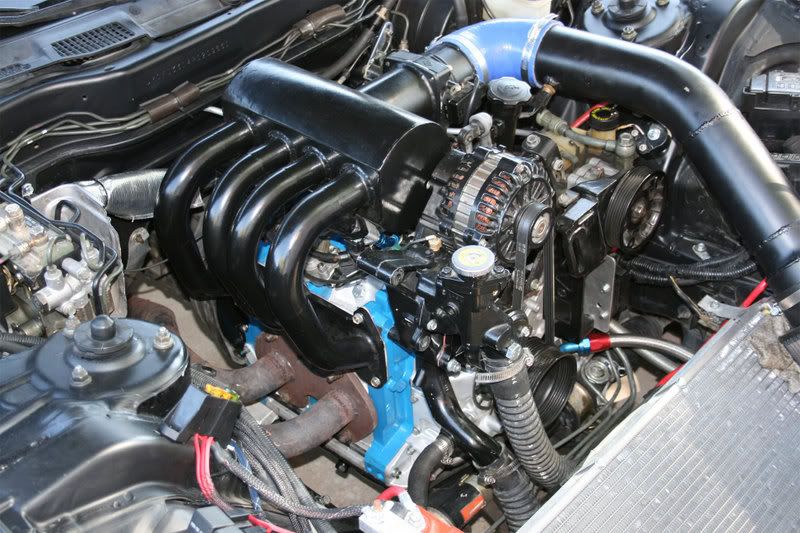Time for another update (this will be used in conjunction with the NA to Turbo sticky found in the 2nd Gen forum):
To further understand the flow distribution to each runner in a manifold one needs to consider the geometry one has chosen. Flow distributions are going to be significantly different if one chooses runners 'inline' with the throttle body as compared to a 'non-inline' manifold.
A picture is worth a thousand words:
for a 'non-inline' type of manifold think of this:

for a 'inline' type of manifold think of something similar to this:

Both have their pro's and con's. For most people an 'inline' style manifold is going to be just fine for what they want. However there are some things to be made aware of if you're going to be making your own.
First and foremost, any changes to the stock manifold should be qualified. That is; use a CFD program to calculate how your flow is going to be affected. I'm not going to get into the nitty gritty of CFD programs or even how to run them, but suffice it to say that it's better to use one than to not (you can look up OpenFOAM for a free CFD program with a large support community--I however do not use it, so don't ask me). Once you have qualified your base design to ensure
uniform airflow distribution between both the front and rear rotors look at the size of the throttle body. If you can't get the flow just right, take a close look at your intake velocity .
When using a CFD program, you may notice that some of the issues you encounter come from
too fast of an airflow into the manifold (if you're doing boosted applications you'll need to calculate the volumetric flow rate coming through the throttle body). There are a few ways to overcome too fast of an airflow into the manifold. First and foremost increasing the size of the throttle body will inherently slow down the flow for a better and more uniform distribution. However, just upping the throttle body may not yield desired results. One must further look at how the air is expanding into the plenum. Without getting into a lot of engineering speak and mathematics; a gradual enlarging of the effective area of the flow will slow down the flow. Such an object is called a diffuser (no we're not talking about the thing that goes under the rear bumper--though they do the same feat).
Diffuser geometry is very tricky to get right. If, for instance, you enlarge the diffuser too quickly you will cause the air to separate (engineering speak: The boundary layer separates) from the wall of the diffuser causing turbulence and circulation (something we're trying to avoid at this point of the flow). If you carry on the diffuser for too long the boundary layer will begin to enlarge and separate; eventually causing circulation. This is, of course, based on the intake velocity. Slower traveling intake charge will be easier to expand than a faster moving charge.
For understanding the above here are some images of 75mm 'non-inline' manifold compared to a 90mm 'non-inline' manifold.
(reserved)